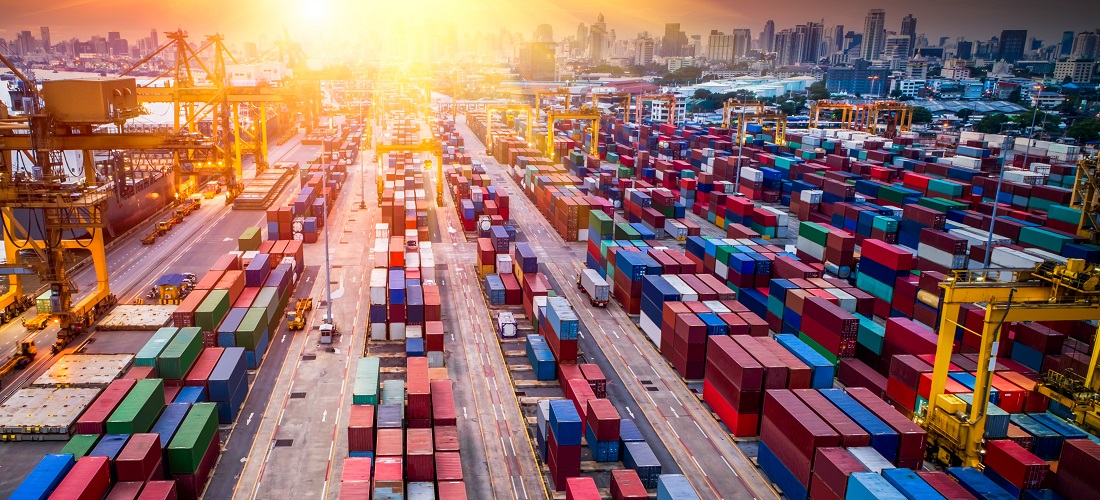
DataLiner: April data indicate a tepid economy
May, 31, 2022 Posted by Gabriel MalheirosWeek 202222
Recently-published DataLiner data on container handling in April indicates that Brazil’s economy remains stagnant.
The country imported 182,413 TEUs in April, a decrease of 17% compared to the same month in 2021. In the four-month comparison, 2022 recorded a flow of 791,801 TEUs over 942,752 TEUs between January and April 2021, a decrease of 16%.
Regardless, these numbers are in line with the imports carried out in the same period of 2020 (795,742 TEU) and 5.8% higher than in 2019 (748,395 TEU). It is worth remembering that the beginning of 2021 was an atypical moment for imports, with a recovery in volumes that, due to the Covid-19 pandemic, stopped entering the country in the previous year.
Check below the track record of Brazilian imports via containers in the first four months from 2019 to 2022, followed by a comparative chart displaying the monthly results. The data is from DataLiner:
Brazilian Imports via Containers | Jan – April | 2019 – 2022 | TEUs
Source: DataLiner (click here to request a demo)
Monthly Comparison of Brazilian Imports via Containers | Jan – Apr | 2019 – 2022| TEUs
Source: DataLiner (click here to request a demo)
The rigorous lockdown imposed by China, particularly in Shanghai, in recent months to prevent coronavirus contamination was one of the factors that impacted Brazilian imports. As a result, Brazil bought 12.8% less Chinese cargo from January to April 2022 compared to the same period the previous year.
Congestion at the Shanghai port rose in March and April but began to lessen in May when the authorities shifted trade to alternative ports in northern and southern China. However, overall congestion remains significant, with lengthier ship queues observed at alternative ports such as Tianjin and Zhoushan.
There was also a significant drop in US imports of 26%. It is worth remembering that the US also registers high inflation, in addition to compromised port logistics.
According to the California Farm Bureau Federation, nuts and dairy products struggle to find available containers. Many carriers no longer call at the Port of Oakland, preferring to carry empty ships directly to the ports of Los Angeles and Long Beach to capitalize on high rates from Asia to the US West Coast.
Exports
As for exports, container handling in April dropped 3.2% (230,610 TEUs) compared to April 2021 (238,229 TEUs). However, the total result of the first four months of 2022 compared to the same aggregate result in 202 shows that the decrease was only 1.07%, indicating stability.
Check below the track record of Brazilian exports via containers in the first four months from 2019 to 2022, followed by a comparative chart displaying the monthly results. The data is from DataLiner:
Brazilian Exports via Containers | Jan – April | 2019 – 2022 | TEUs
Source: DataLiner (click here to request a demo)
Monthly Comparison of Brazilian Exports | Jan – Apr | 2019 – 2022| TEUs
Source: DataLiner (click here to request a demo)
Export destinations
Exports to Russia experienced the greatest reduction, falling 37% from January to April 2022 compared to the previous year. The West Coast of the United States saw the greatest reduction in volume, 34.5%, in the same comparison.
Exports to China declined 7.6% year on year in the first four months due to the country’s problems. On the other hand, exports to other Asian nations actually increased, such as to the Philippines (48%), Malaysia (44%), and Taiwan (81.8%).
Other highlights included a 28.4% increase in shipments to Argentina in January-April 2022 compared to the same period in 2021 and a 46.2% increase in exports to the United Arab Emirates in the same period.
Future projections
The economy is expected to continue tepid in the coming months. According to a projection made on the 30th by the Department of Economic Research of Bradesco (DEPEC), the Brazilian GDP should finish the year with a 1.5 percent rise. Industrial production is expected to fall by 0.4 percent this year.
-
Grains
Oct, 19, 2021
0
Ministry of Agriculture investigates new Asian insect in Santos
-
Meat
Mar, 31, 2025
0
Cattle Ranchers Form Association to Export Live Cattle Directly, Increasing Profits by Up to 20%
-
Ports and Terminals
Jul, 26, 2019
0
TCP specializes in cotton exports
-
Ports and Terminals
Dec, 16, 2021
0
Cargo handling by rail reaches 20% in Paraná ports

